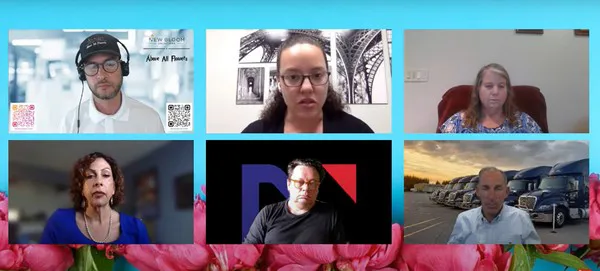As the demand keeps increasing, challenges to meet that do the same. In the latest episode of The Bloom Show, industry experts from the full extent of the flower supply chain have discussed the unexpected surge in the demand during the pandemic, and the challenges it created. But now that it seems that we have left the pandemic behind, what is going to happen to that demand? And what is left of the related challenges, and what is to expect?
“The pandemic provided the flower industry with a huge opportunity we didn’t see coming,” says Christine Boldt of AFIF: America’s Flower Connection. “Prior to that, the flower industry wasn’t suffering per se, but we were all questioning how to increase the demand. When the pandemic happened, I advocated that the flower industry never stopped. Right away, we were able to supply anyone in the country that was open.” Yet, that had to deal with the issues with labor and transportation. So, the question is how to meet that demand, despite the hurdles. “We had a lot of challenges to get our product to Miami airport, or even getting out of Miami too,” Christine continues. “90% of flowers in the US comes through South Florida. That creates a huge challenge because there is just so much volume there, including fruit, vegetables, and fish.” Once that has passed though, the industry found itself once again dealing with challenges they didn’t see coming. “What is going to move forward for us? We don’t know what’s going to be of the freight rates, or people’s purchasing habits; are they going to continue to spend time at home and embellish their indoors with flowers, or will they spend money elsewhere?” Christine asks.
Logistics
The labor shortages caused by the pandemic were even more difficult to deal with for the trucking industry, as David Armellini of Armellini Logistics points out. Indeed, the trucking industry has been dealing for quite a while with a labor shortage problem, and drivers are particularly hard to find. This during the pandemic became even more difficult because volumes increased and thus the time spent on the road, the stops, and the deliveries did too, David says. “Finding a driver to do that is almost impossible now. We had to make changes to our business to adapt to the increased volume. For instance, we had to reduce some of the services we provided to decrease the number of stops to make it more palatable for a driver to work for us.” Also, with regards to air transport, there’s a bit of uncertainty if the solutions found during the pandemic will stick. As Simon Milne of Solent Freight Services says, “we don’t see a clear path ahead, at the moment.”

Now, the biggest challenge for transportation is the higher prices, especially with regard to fuel. Simon says that they had to charge $90,000 more for the fuel per flight, and David says that their fuel charge went up by 55%. “Fuel prices are definitely going to affect what we are seeing in the industry,” says Simon. He indeed remarks that when the economy is good, people spend money on flowers, but if they are living on credit, they most likely won’t. On the other hand, for David, the problem is not only the fuel prices but whether the fuel is available at all. “We need to plan at which stations our trucks can get some fuel. The North East especially is having trouble with that. One thing is to pay more, another is to have fuel at all.”
Consolidation
Despite the challenges, the demand, for now, stays good, also thanks to the different sourcing options that flower importers had to find during the peak of the pandemic. “The majority of the flowers in the US come from South America,” says Christine. “Since demand was so high, and the pandemic kept at home quite a few nurseries and greenhouse employees, importers started to buy from different farms all over the world. Of course, during the pandemic we weren’t shipping stuff from Australia, as costs would be prohibitive, so we had to find solutions. That has provided opportunities for other farms to consolidate too.”
Importing flowers also poses the issue of inspections. During the pandemic, staff shortages affected inspectors as well. Thus, the industry had to find solutions for that. “There’s the opportunity to pay for overtime if there’s not enough inspector staff,” Christine says. At the same time, there is a difference between inspections in air or sea transportation. “If an airline or a broker presents a product, that’s divided product by product, farm by farm. If a pest is found on one product, that product from that farm has to be held so that the USDA can determine whether it needs treatment,” Christine explains. “In the sea it’s different. If a container has multiple products, they can’t determine where the pest comes from, so the container needs to be fumigated. Thus, it’s riskier to transport in a sea container because of the pest identification, but also because it takes a longer time to inspect that.” Christine continues that there have been some trials to inspect sea containers the same way air cargo is, and they proved to be working. So, the flower industry has a lot of opportunities to seize, yet it’s crucial that the most pressing challenges are tackled in the most efficient way possible.
